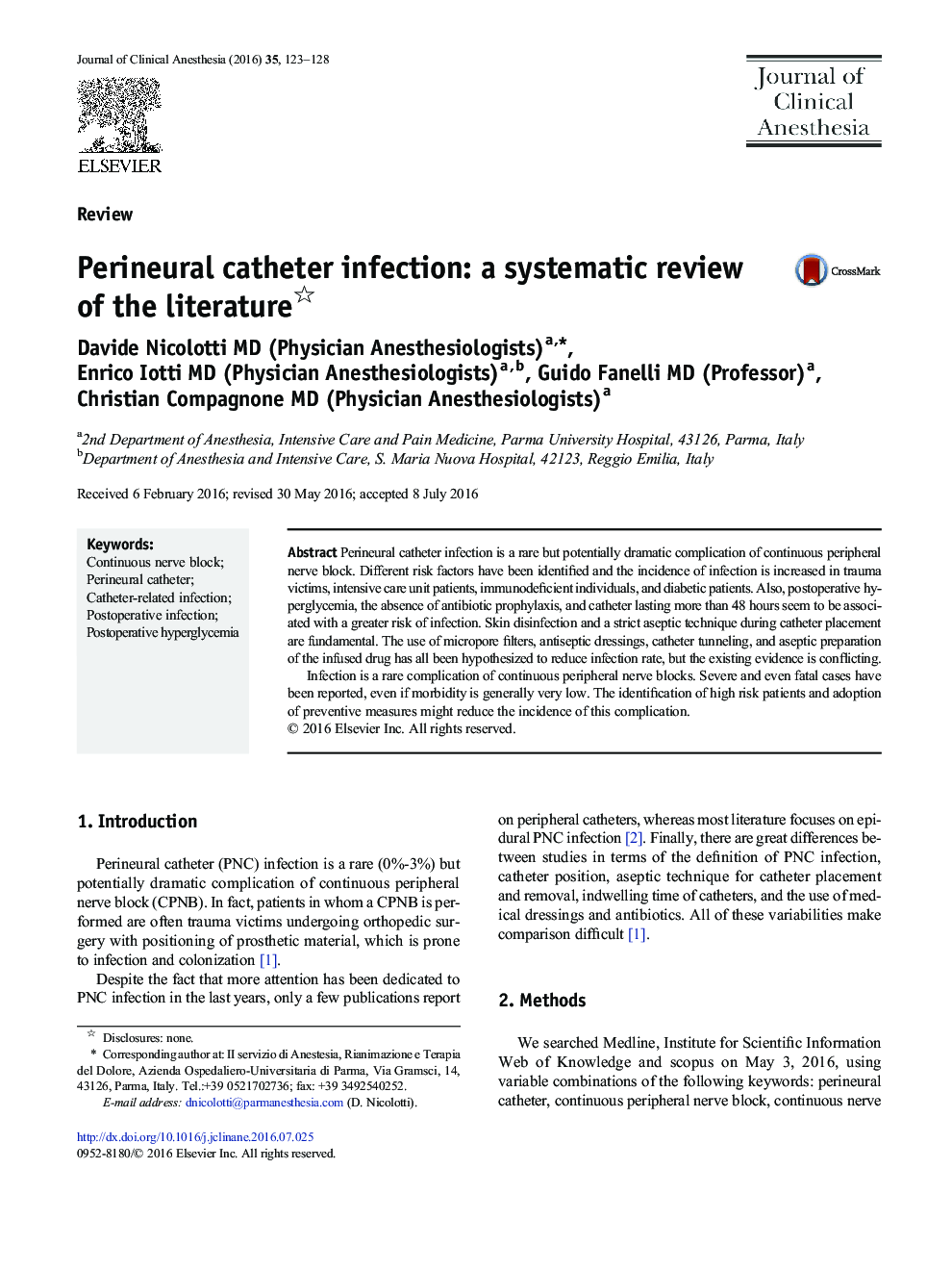| Article ID | Journal | Published Year | Pages | File Type |
|---|---|---|---|---|
| 5884447 | Journal of Clinical Anesthesia | 2016 | 6 Pages |
â¢Catheter infection incidence up to 3% in recently published series.â¢Mechanisms include bloodstream diffusion, drug contamination, and pathogen penetration.â¢Strict aseptic technique is probably the most valuable preemptive strategy.â¢Role of different dressings and subcutaneous tunneling is still to be established.â¢Glycemic control in diabetic and nondiabetic patients may reduce infections.
Perineural catheter infection is a rare but potentially dramatic complication of continuous peripheral nerve block. Different risk factors have been identified and the incidence of infection is increased in trauma victims, intensive care unit patients, immunodeficient individuals, and diabetic patients. Also, postoperative hyperglycemia, the absence of antibiotic prophylaxis, and catheter lasting more than 48 hours seem to be associated with a greater risk of infection. Skin disinfection and a strict aseptic technique during catheter placement are fundamental. The use of micropore filters, antiseptic dressings, catheter tunneling, and aseptic preparation of the infused drug has all been hypothesized to reduce infection rate, but the existing evidence is conflicting.Infection is a rare complication of continuous peripheral nerve blocks. Severe and even fatal cases have been reported, even if morbidity is generally very low. The identification of high risk patients and adoption of preventive measures might reduce the incidence of this complication.
